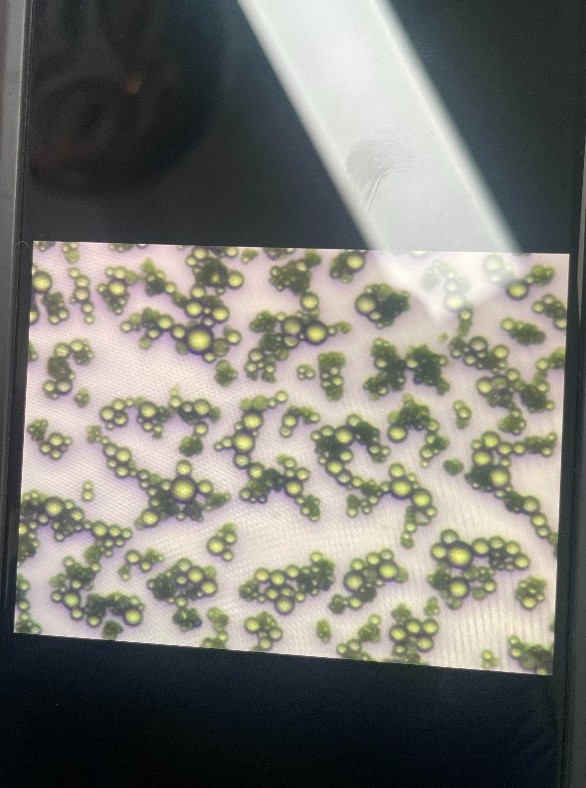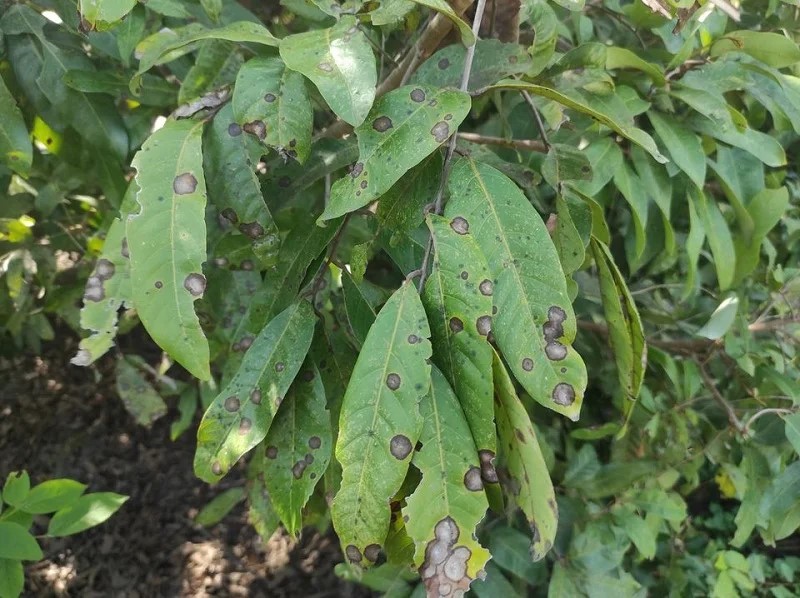
Anthracnose on Mango and Durian: Causes, Symptoms and Prevention
Anthracnose on Mango and Durian: Causes, Symptoms and Prevention
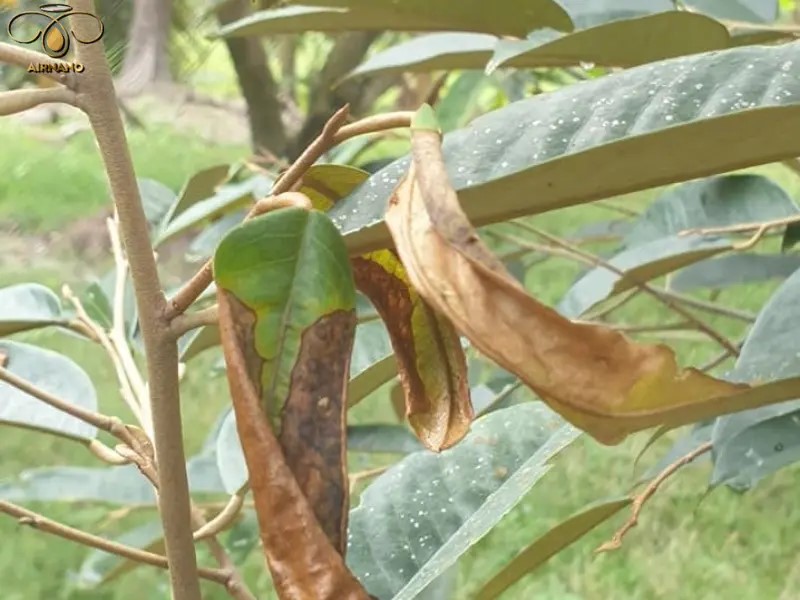
Anthracnose is one of the most common and serious diseases on mango and durian trees, especially in humid tropical climates like Vietnam. Both of these crops have high economic value, so anthracnose control is an important factor in protecting fruit yield and quality. Below is detailed information on anthracnose on mango and durian, along with effective prevention and control measures.
1. Anthracnose on mango
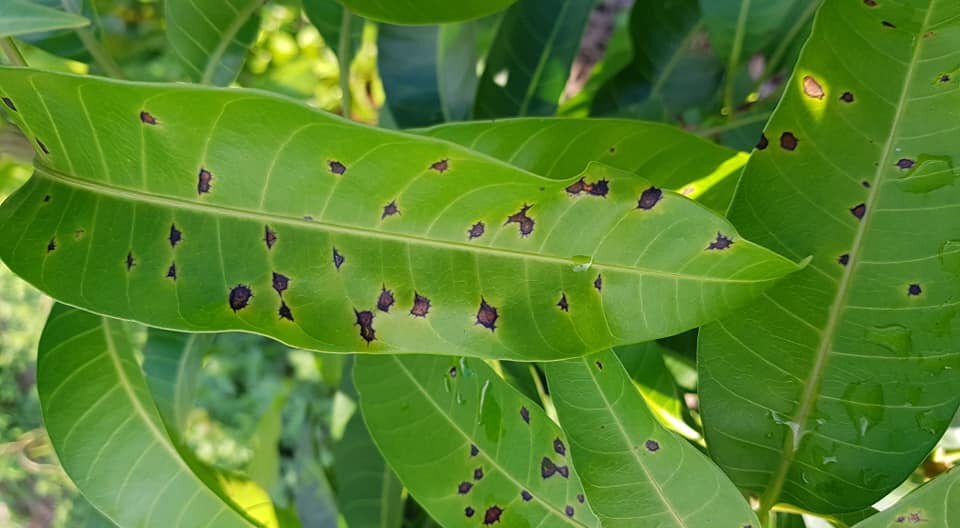
1.1. Causes of the disease
Anthracnose on mango is caused by the fungus Colletotrichum gloeosporioides. This fungus thrives in humid conditions, temperatures from 25-30°C, and easily spreads through plant parts such as leaves, flowers, branches, and fruits. The fungus can survive in plant residues and then spread by wind and rainwater, especially during the rainy season and when the humidity is high.
1.2. Symptoms
Symptoms of anthracnose on mango can appear on many parts of the tree, especially the leaves, flowers and fruits.
- On the leaves: Infected mango leaves will have small black spots that gradually spread, with a dark brown color, and the center of the lesion is often lighter in color. These spots can merge into large patches, causing the leaves to dry and fall off early.
- On the flowers: Infected mango flowers will have small brown or black spots, causing the flowers to dry and fall off. This directly affects the fruit set rate and crop yield.
- On the fruit: Infected mango fruits will have small black spots that appear from the stem, then gradually spread across the entire surface of the fruit. The lesions are often sunken, round, brown or black. In humid conditions, the fungus will grow strongly and create a brown or black powdery layer on the surface of the lesion, causing the mango to rot and reducing its commercial value.
1.3. Harm
Anthracnose causes serious losses in mango yield and quality. Infected flowers and fruits may not develop, reducing the fruit set rate. Infected fruits not only reduce the commercial value but also affect the export market.
1.4. Control measures
To prevent and treat anthracnose on mango, it is necessary to apply synchronous measures:
- Pruning: Regularly prune infected branches and leaves and destroy plant residues to minimize the spread of the disease.
- Humidity management: Ensure that the mango garden is well-ventilated, avoid prolonged wet conditions by adjusting the watering regime and cleaning weeds.
- Use of pesticides: Fungicides such as Mancozeb, Chlorothalonil or Difenoconazole can be sprayed to prevent the disease, especially during the flowering stage and after rain.
2. Anthracnose on durian
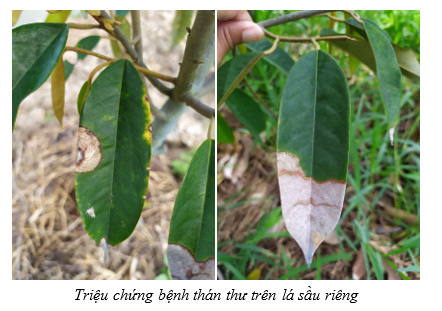
2.1. Causes of the disease
Similar to mango, anthracnose on durian is also caused by the fungus Colletotrichum gloeosporioides. This fungus thrives in humid conditions and often appears during the rainy season, when the humidity is high. Anthracnose fungi can survive on crop residues and spread through rainwater or wind.
2.2. Symptoms
Anthracnose on durian has obvious symptoms on leaves, branches and fruits.
- On leaves: Diseased durian leaves will have brown or black spots, starting from small points, then spreading and having irregular shapes. The lesions can cause the leaves to burn, dry and fall off early.
- On branches: Diseased branches also have dark brown spots, then spreading, which can lead to the branches dying. This greatly affects the growth and development of the tree.
- On fruits: Durian fruits infected with anthracnose will have small black spots, usually appearing from the fruit stem and gradually spreading to the surface of the fruit. These lesions can cause the fruit to rot, reduce quality and become unexportable.
2.3. Harm
Anthracnose can reduce the yield and quality of durian. Especially for crops with high economic value such as durian, the losses caused by the disease can seriously affect the income of growers.
2.4. Prevention and control measures
Prevention and control of anthracnose on durian must be carried out proactively and continuously:
- Pruning and cleaning the garden: Prune diseased branches and leaves, destroy crop residues and keep the garden airy to minimize humidity and prevent fungal growth.
- Water management: Avoid over-watering during the rainy season and have a good drainage system to prevent prolonged wetness.
- Balanced fertilization: Provide adequate nutrition, especially potassium and calcium, to help durian trees stay healthy and increase their resistance to disease.
- Use of pesticides: In case the disease has appeared, pesticides such as Propiconazole, Thiophanate-methyl or Mancozeb can be used for spraying to prevent and control it. Medicines containing the above active ingredients such as: Tatsu 25WP, NAPOLEON, Niko 72WP, An-k-zeb 800WP, BYPHAN 800WP, Gone super 350ec
3. Integrated management of anthracnose
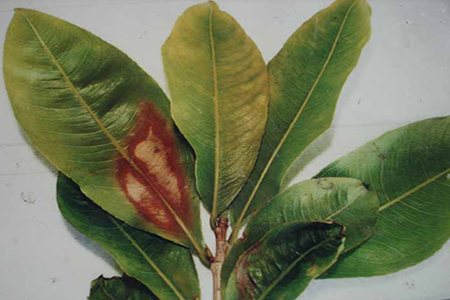
Controlling anthracnose on both mango and durian does not stop at using pesticides but also depends on integrated management, including:
- Selecting disease-resistant varieties: Selecting mango and durian varieties with good disease resistance is an important measure in minimizing the risk of infection.
- Nutrition management: Providing proper nutrition helps plants grow healthily and increase their resistance to disease.
- Garden sanitation: Regular garden sanitation, proper pruning, and destruction of infected plant residues will help limit the source of the disease and prevent its spread.
- Theo dõi và phát hiện sớm: Việc thường xuyên kiểm tra vườn, phát hiện sớm các dấu hiệu của bệnh và can thiệp kịp thời sẽ giúp giảm thiểu tổn thất.
4. Conclusion
Anthracnose on mango and durian is a serious problem for farmers, especially in the humid tropical climate of Vietnam. However, with comprehensive prevention and management measures, including selecting disease-resistant varieties, managing nutrition and the growing environment, along with the support of pesticides when necessary, anthracnose can be completely controlled and damage minimized. Proactively applying preventive measures will help ensure healthy growth, high yield and good quality, bringing sustainable profits to growers.
Bình luận
Những bình luận mới nhất
